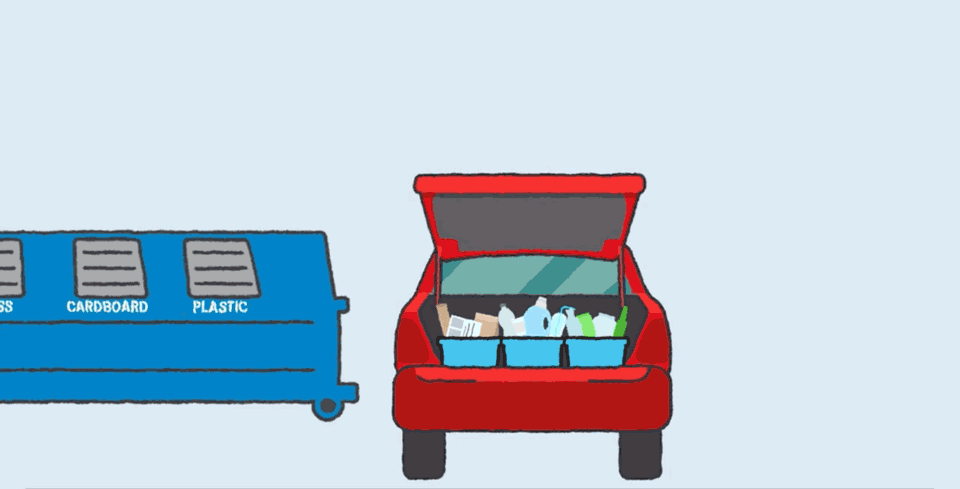Drop It Low: Best Management Practices for Reducing Contamination in Drop-Off Recycling Programs
May 11, 2022 by Cassandra Ford, The Recycling Partnership

Forty-five percent of Americans don’t have access to curbside recycling, in many cases it’s rural communities or multi-family housing properties. To fill that recycling access gap, many communities utilize drop-off sites for collection. Drop off sites can take a variety of forms, so unfortunately, there isn’t a one-size-fits-all fix to the recycling contamination challenge when it appears. Recycling contamination can occur at drop-off sites differently than curbside so communities must learn to manage those differences.
Contamination increases the cost to the recycling system in labor, time, and increased safety hazards. But the benefits of contamination reduction include:
- Increased quality of recyclables,
- Improved program satisfaction,
- Increased participation,
- Increased capture of quality recyclables which feeds local manufacturing,
- Increased value of recyclables materials, and
- Increased savings related to improved processing and decrease in labor, downtime, and fees.
The Recycling Partnership’s contamination reduction campaign consists of three main communication elements focused on achieving positive behavior change.
Inform & Trigger Behavior (Site Signage & Direct Mailer)
- Residents receive an Information Card via direct mail, which identifies acceptable materials, top issue contaminants, as well as locations and hours of drop-off sites.
- All collection containers onsite should have signage to inform patrons what is acceptable. Signage denoting when residents can use the site and contact information for further questions is also encouraged.
Personalized Feedback (Handout at Drop-off)
- Staff onsite can check for quality as residents recycle their materials. If a contaminant is identified, the resident is asked to remove the contaminant and given direction on where and how to properly dispose of the item. Additionally, staff can encourage and thank residents. Direct engagement helps residents feel educated and empowered to recycle more, better.
Issue Specific Communication (On-site Promotion & Direct Mailer)
- The Top Issue Contaminant is identified in the planning process by the community, hauler and/or the Materials Recovery Facility. Residents are informed of the top issue via a mailer and/or issue specific signage onsite.
There are four BMPs communities should consider when creating or making improvements to their drop-off recycling sites.
Signage
- It must be present and clear. Less text and more pictures helps with understanding and inclusivity. Keep it limited in the number of signs to avoid residents feeling overwhelmed by too many directions. Place signage at eye level in areas of high visibility.
Security Cameras
- Will deter illegal/illicit dumping and could provide a way to track participation and contamination
Fencing
- Controlling access and hours to the drop-off site can also help reduce illegal/illicit dumping
Staff onsite
- Can provide direct resident feedback, survey patrons, and conduct site maintenance
The Recycling Partnership’s Drop-Off Recycling Contamination Reduction Kit details these communication elements and BMPs, as well as guidance for discussions with local material recovery facilities and haulers, instructions and tools for messaging, strategies to reduce contamination including illegal/illicit dumping, as well as tracking and reporting. The toolkit can be used by communities large and small looking to reduce contamination, increase participation, and improve capture of clean materials.
For more information or to download the Drop-Off Recycling Contamination Reduction Kit, visit https://recyclingpartnership.org/dropoff.







Leave a comment